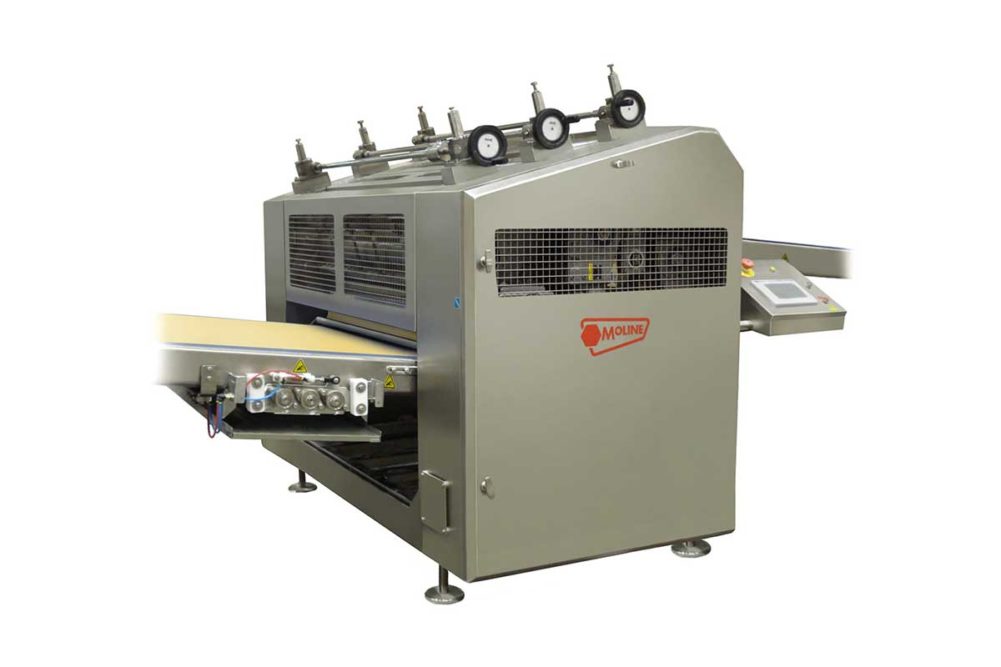Whether producers are making hot-press or sheeted tortillas, getting them just right is tricky because while the dough receives a workout to get them very thin, the doughs shouldn’t be overworked.
“You want to make sure you’re processing tortillas as relaxed as possible, which is somewhat contradictory to say, but it’s still true,” said David Moline, vice president of sales and marketing for Moline Machinery. “When you’re taking a dough and sheeting it to 1 mm thick, you’re having to impart a lot of work. There’s a lot of work that has to be done on dough for tortilla systems. But at the same time, you want to make sure that your system is balanced and relaxed.”
Makers of tortillas and other forms of flatbread are working hard to meet consumer demand. The global tortilla market is expected to grow by nearly $10 billion from 2021 to 2026, with a compound annual growth rate of 5.6%, according to Technavio. Producers are seeking ways to increase production while maintaining quality. That means equipment must keep a rapid pace and be in top working order run by well-trained operators. All the processes from mixer to oven, including dough weight and consistency, must stay in sync. A tricky business, indeed.
Tortillas and flatbreads made of wheat can be processed multiple ways. Dough balls can go through a hot press or be hand stretched, or the dough can be sheeted and die cut. Each method presents challenges and advantages. Ken Hagedorn, vice president, bakery sector, Handtmann, compared the difference between hot-press tortillas and die cut to glossy vs. satin paint. Hot-press tortillas have shiny surfaces and are often the tortillas consumers buy at the grocery store.
“If producers are making an enchilada or burrito, they’ll use a sheeted tortilla for that,” he said. “But if you’re just selling it in bulk, most people want the hot-pressed tortilla because it actually stays more moist because you’re sealing the surface.”
And hot-pressed tortillas create virtually no scrap dough that must be managed as it does with sheeted tortillas. Sheeted tortillas are punched out, then the scrap dough is generally fed back into the process.
“There’s really no slow point on a sheeted line other than the width,” Mr. Hagedorn added. “With a sheeted line, you’re cutting a circle out of a dough sheet. Now what do you do with all that scrap dough? Some people, depending on the quality of the tortilla, take part of that back to the mixer to mix it in. But you very rarely can get away with putting 100% scrap back.”
Scaling trim dough accurately is vital to a well-run line because trim dough is a component of the recipe, Mr. Moline explained.
“You need to make sure your percentages are consistent because if they’re not consistent, by modifying your trim percentages, it can wreak havoc on your system,” he said.
Too much scrap will alter recipes because the dough is processed twice.
“If they’re smart, they’ll take a certain percentage back and put it in the mixer because it’s part of their formula,” Mr. Hagedorn said. “Maybe it’s 100 lbs of flour and they’ll put 20 lbs of scrap dough in with it.”
Nick Magistrelli, vice president of sales and marketing, Rademaker USA, suggested that tortilla makers invest in automated scrap handling systems to streamline the process of recycling scrap dough.
“Bakers think, ‘Hey, I’m going to make the product and figure out how I’m going to manage that scrap on my own by hand instead of making that additional investment,’ ” he said. “But you have a return on investment there because if you’re going to have 35% scrap, depending on the volume of a line, you’ve got to manage it.”
Mr. Magistrelli also mentioned that sheeted tortillas have the advantage of providing consistency on high-throughput lines.
“The biggest advantages that a sheeting line has are shape control and the consistency that comes with the shape control of die-cut lines,” he said. “The other thing with the tortilla industry we’re seeing is they want us to go wider, so we’re getting into those wider applications now as well. We can build these tortilla lines with a wide working width, which is tough because of the specialized nature in those reduction units to be able to go that wide but be able to get the lines to run that fast and get the dough sheet that thin.”
This article is an excerpt from the July 2023 issue of Baking & Snack. To read the entire feature on Flatbreads & Tortillas, click here.





